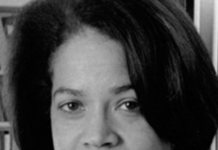 From 1994 to 1998 the U.S. Department of Housing and Urban Development gave housing vouchers to more than 4,600 low-income urban families in Baltimore, Boston, Chicago, Los Angeles, and New York. The Moving to Opportunity program allowed families to escape high poverty neighborhoods and move to housing in areas that were more economically viable, had better schools, and lower crime rates.
From 1994 to 1998 the U.S. Department of Housing and Urban Development gave housing vouchers to more than 4,600 low-income urban families in Baltimore, Boston, Chicago, Los Angeles, and New York. The Moving to Opportunity program allowed families to escape high poverty neighborhoods and move to housing in areas that were more economically viable, had better schools, and lower crime rates.
Follow-up studies of the children of these families were conducted between 10 and 15 years after the families moved out of the high poverty neighborhoods. The results of the follow-up studies found that the moves were highly beneficial for girls in these families but not so for boys. Girls showed reduced rates of depression and were less likely to get into trouble. But boys showed greater rates of depression, higher incidence of post-traumatic stress disorder, and had more conduct disorders.
Jens Ludwig, the McCormick Foundation Professor of Social Service Administration at the University of Chicago and a co-author of the study, stated, “This work demonstrates that the effects of housing mobility interventions are more complicated than one might expect. For boys, the increase in PTSD is comparable to what you see from combat exposure among military veterans, while the reduction in depression among girls is equally massive.”
The authors of the study concluded that “qualitative evidence suggested these differences were due to girls profiting more than boys from moving to better neighborhoods because of sex differences in both neighborhood experiences and in the social skills needed to capitalize on new opportunities presented by their improved neighborhoods.”
The article, “Associations of Housing Mobility Interventions for Children in High-Poverty Neighborhoods With Subsequent Mental Disorders During Adolescence,” was published in the Journal of the American Medical Association. It may be accessed here.











This is interesting. There was another report that boys faired better because they were often seen as a jock or cool, while girls were seen as “angry black women.” I can tell you from personal history and experience, having been born and raised in Baltimore, that the segregation practices there run deep. I am a professional woman, and I was harassed and criminalized in Columbia, MD because it was presumed I was poor and on welfare because I lived in apartments on Harpers Farm Rd. It is the prevailing stereotype that you are on Section 8 when you live in the apartments. The residents stalk and harass you frequently and the police ignore it because they believe you are powerless to act. It is a fair housing issue and I will address it as such in the upcoming month. It is amazing to me that this still needs to be addressed.
I integrated public schools in Baltimore, and like many, I thought this chapter of the history was closed. It is not. Gentrification and revitalization of urban communities has brought the issue to the surface again. Fortunately, if there is to be an upside, the pattern is the same. One only needs to watch the musical Hair, which eludes to the history of segregation in Baltimore, or read the book, Not in My Neighborhood by Antero Pietila, which recounts the history beautifully. Mr. Pietila is one of the speakers at the upcoming symposium on Fair Housing sponsored at the University of Maryland Carey School of Law on April 25th. I hope you all attend.
The focus can be to move poverty from areas where children and their adults live. Otherwise the country will become saturated with every root cause that blocks humans from progressing. Every child deserves a healthy, happy, protected and cherished space to live and dream and create.